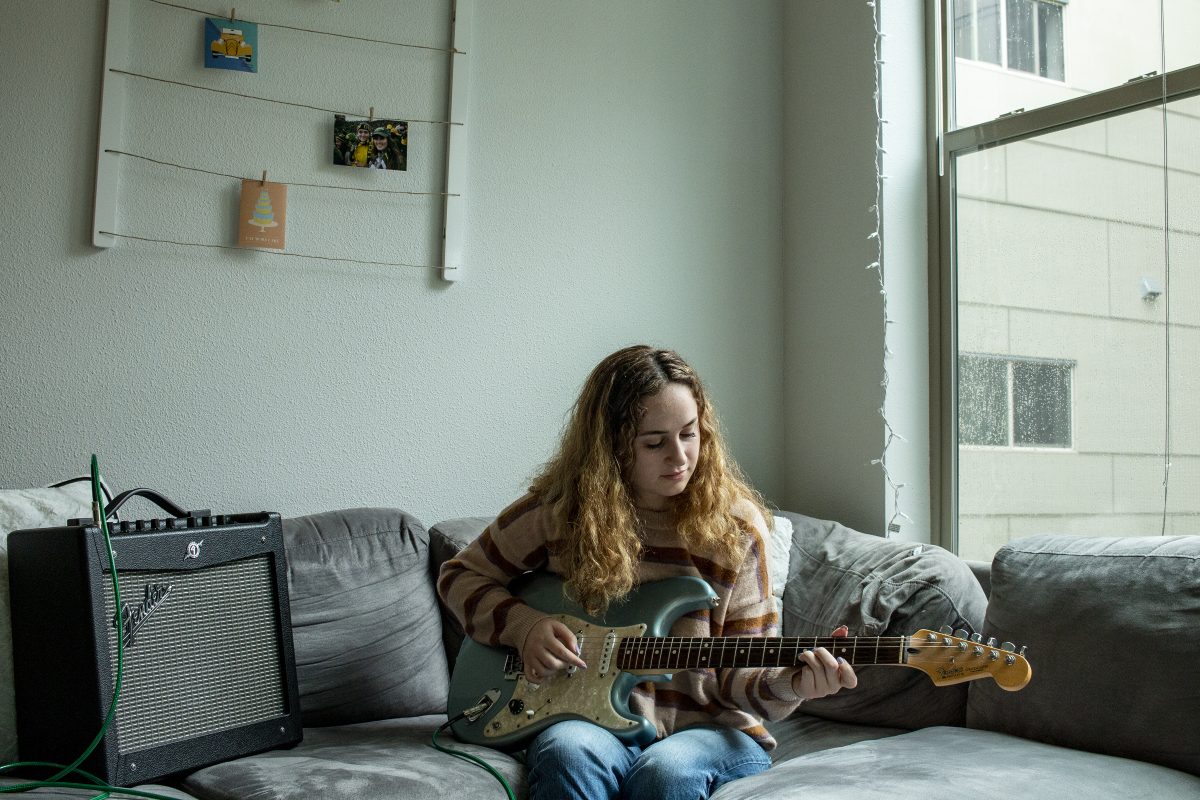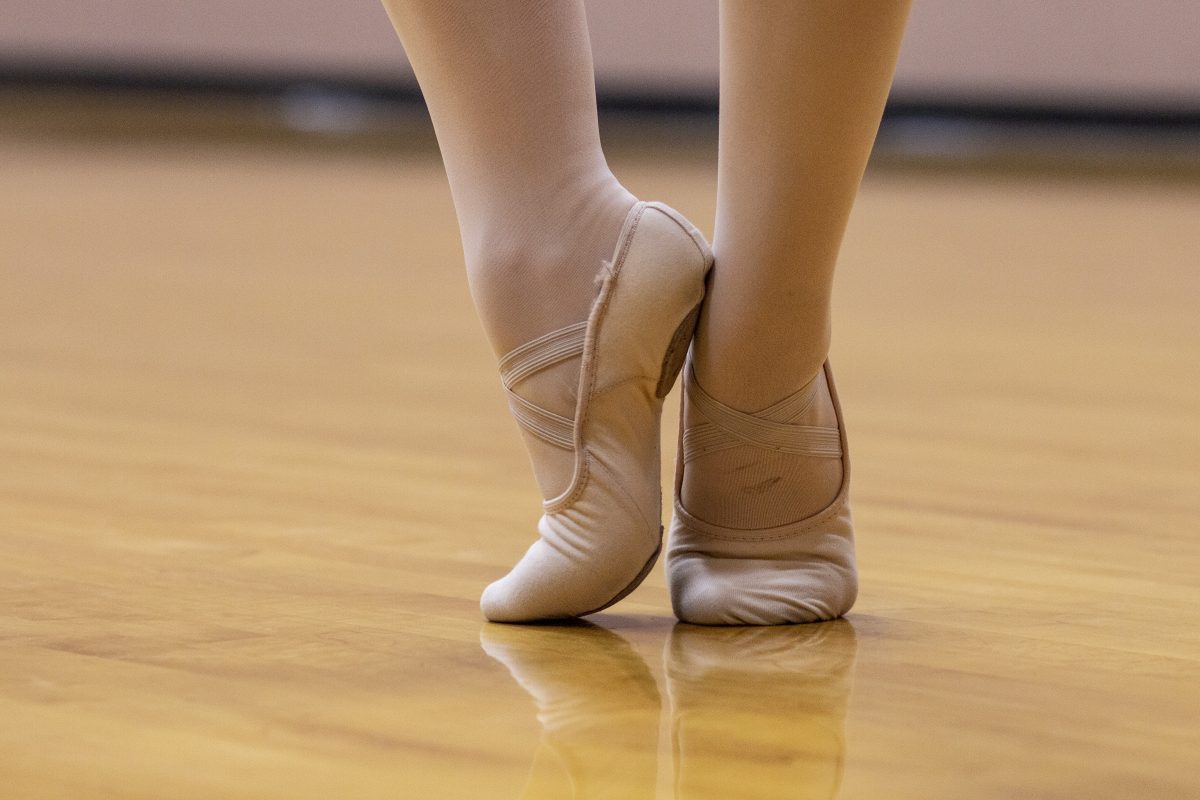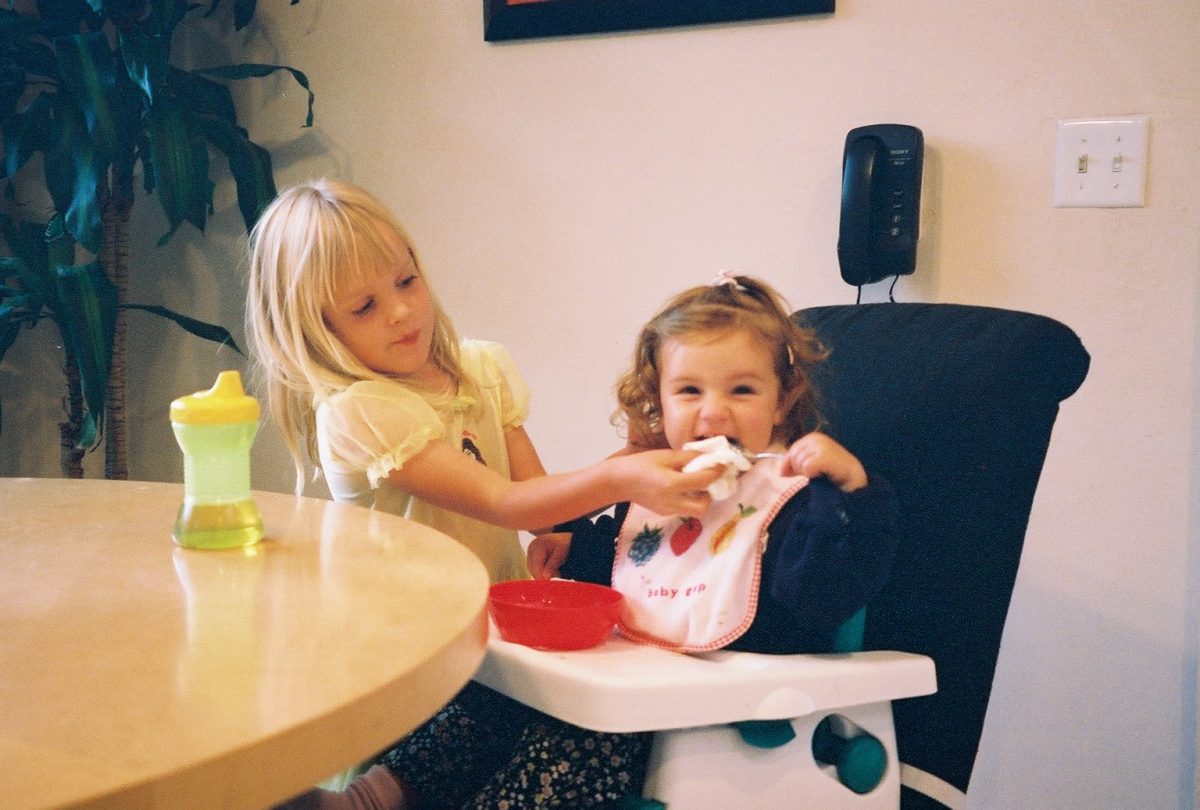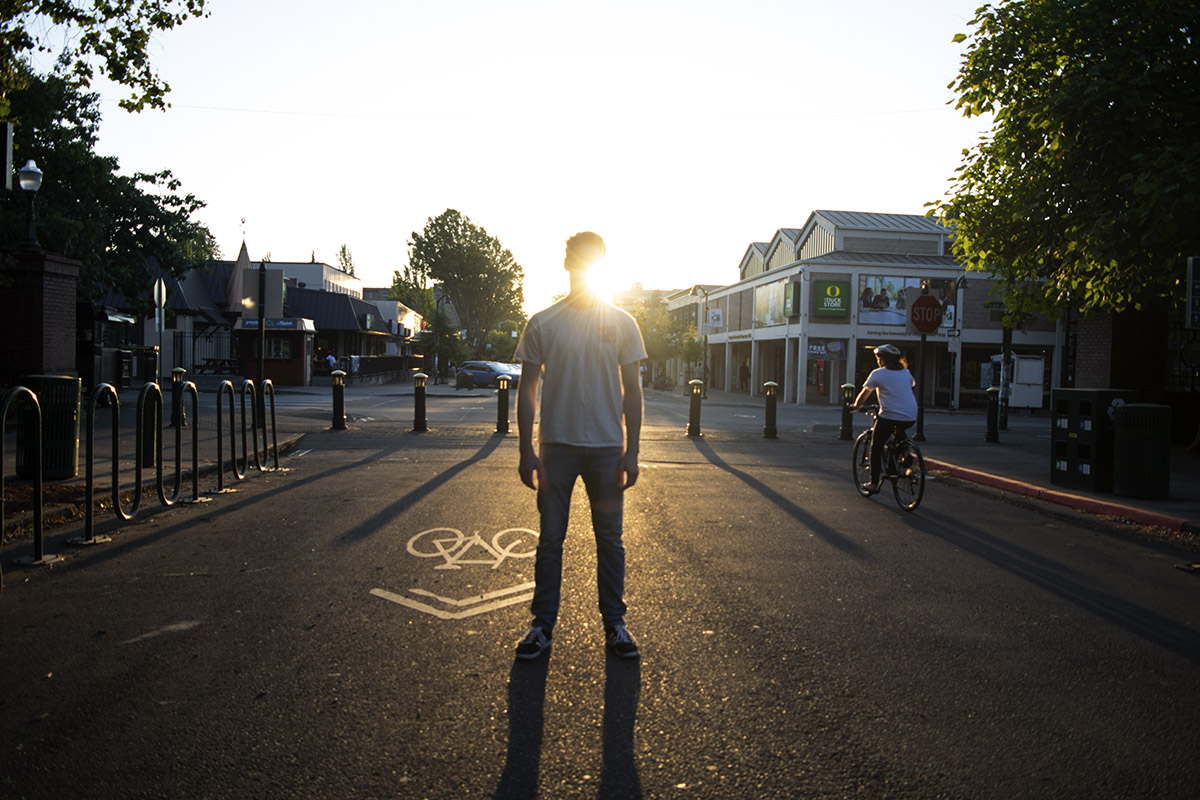Landing on an empty seat with a firm exhale and closed eyes, it almost feels like that last lecture never happened. The ever-multiplying list of reminders is still at hand, but you are somewhere else completely — absorbing a bassline, or already at the beach house, or tucked into bed with the whole day behind you.
Tranquil pauses like this are customary among college students, happening simultaneously across campus as stress increases and the need for release follows suit. These routine breaks are like ceremonies, falling under one common creed: escapism.
“I find it hard to describe that feeling, but it’s definitely some form of escaping from your average life,” says 20-year-old Grace Cardinale, artistically known as “Telephone Dream Girl.” In the midst of frigid winter winds, her reflections on a musician’s endeavor glow. “Music is a huge priority for me, and one of the ways I like to relax. Just jamming with other people that you connect with and playing music live for other people is such a crazy experience.”
For Cardinale, who released a record last month titled “Fortune,” snatching up melodies and building musical “aesthetic” provides a reliable release from the obligation-related stress that can overwhelm a modern-day college student. “A lot of times, with school especially, if I just feel like ‘I can’t do homework right now,’ I can just play guitar for a little bit, write some songs. It just makes me feel better to create something that’s not just for school.”
Stress, indulge, repeat — a vigorous rhythm fit for the hectic melody of collegiate lifestyle. This cycle occurs on macro and micro scales, ranging from the broader academic calendar to power-naps and chocolate squares between lectures. The term “escapism” tends to carry a hefty, obtusely magical connotation. Though some think of a “great escape,” a marked effort to shut out harsh realities and travel through the imagination, escapism is far more commonplace. According to a 2017 New York Post article, Americans spend about 13 hours of their week (and about four years of their lives) escaping reality. This includes activities ranging from more literal getaways, such as daydreaming and exploring travel options, to accustomed actions such as listening to music and browsing social media.
The tendency to slip into grey areas between reality and imagination speaks to the necessity of habitual indulgences, or mechanisms of catharsis, in our day-to-day routine. The term “catharsis” comes from the Greek katharsis, meaning “purgation” or “purification.” It has come to represent a grand release, or an escape from emotional stress. Yet we don’t have to sit in on an ancient Greek tragedy to experience sensational relief. Crashing into bed after a hectic day, a deep breath in a steaming shower, a memory-bound playlist booming in your headphones on the way to class — mechanisms of solace are indelibly weaved into our schedules. Our miniature getaways recall our most treasured moments of delight, while instilling hope for similar bliss in the future. When balanced with the less-desirable elements of our routine, escapism enriches our perspective by soothing the strain of looming expectations.
As a young person, possibly far from home and certainly wrestling with which values and ambitions to prioritize, the steadfast delights of life become gifts. Viktoria Sargent, 18, discovers her delight in varied forms of movement. A ballerina from a young age, Sargent recently joined the University of Oregon’s Women’s Club Rugby team, and has since discovered how each respective activity provides a distinct solace.
“I’ve been doing [ballet] since I was like three years old, and didn’t really need that type of escape or anything,” says Sargent. “But once I got older and realized the mental benefits that it has, it was more of a necessity at that point.” She explains that entering a studio requires keen concentration on performance, providing an ideal separation from day-to-day stressors. While the attention rugby entails is less precise and more based in team comradery, she says, the activity supplies a similar opportunity to reset and re-gather.
“You’re allowed to come out with a more clear head afterwards and really think about things and not just continue that spiral of stress,” she says. “When you finish a practice or finish a class, it’s like a step back. You can really think about what you need to do, what you want to do and how to balance all of that.” In this way, escaping can be both soothing and productive, as if our perceivable pull toward healthy distraction is a bodily tool of self-preservation, a nudge toward the solace we deserve and the order we require. However, particularly with the rising priority of social media, how we escape, and if that escape truly is advantageous, is complicating.
Psychology Today author Graham Collier has described our consciousness as a sort of “double-life,” as we balance between “outer-looking” and “inner-directed” modes of awareness. “Yet the problem is that in today’s world, there is neither the inclination, nor the opportunity, to spend much time with oneself. The computer is always to hand,” he wrote. “So I would suggest that the real form of ‘Escapism’ nowadays is the compulsive need to constantly be engaged in living an electronic life.” The author proceeds to champion “Mindfulness” as an enriching method of elevating the “inner-directed” self to a capacity helpful in processing observations and molding our identities. The term “Mindfulness” has become increasingly popular in recent years, often used to describe a careful awareness of one’s own mind and spirit in an effort to be fully present.
Is all escapism created equally? Must our relaxation be mindful to be valid? Certainly, there must be some personal threshold in place regarding time spent in sub-real spaces. Collier’s arguments begin to raise the issue of disconnect––from ourselves and from our world––when systems of escapism (particularly less conscious activities, such as scrolling through Instagram) become inflated to a reality-swamping degree. Engaging in social media for extended periods of time may allow for disengagement with a stressful reality, yet the dissociative sensation it can inflict may introduce its own anxieties.
Escapism involves a substantial degree of responsibility and steady self-control. Escapes define our lifestyle, but for them to be rewarding they should be just that — escapes. A scenic back road, not the primary route. An hour-long ballet rehearsal or jam session that supplies just enough release. When we escape, we should be choosing to each time, remaining attentive of our bodies so we may come up for air at the right moments. Listening is crucial in maintaining a meaningful and strategic cycle of responsibility and catharsis. When we prioritize awareness in regards to our personal tension, we may begin embracing our intrinsic cycle of loosening and tightening.
“You don’t have to be holding all your stress in,” says Sargent.“That’s a big thing that causes stress within college students. Everyone thinks they have to be this amazing person who has everything together, but no one has anything together. So just taking a moment to just be with yourself… I find that to be an escape that I try to do regularly.”
Her words bear witness to a community of renegades who are striving to maintain a cool composure. The pressure to appear level headed and able in college can become almost as intimidating as the workload itself. This is where strategies relating to mindfulness and healthy escapism become exceedingly rewarding. By “being with ourselves” more frequently, we can become more familiar with our needs and develop balancing strategies. Though our escapes may disconnect us from our environment and the people around us, the ability of our collective catharsis to unify and empower us is far more remarkable.
Communities are constructed by mechanisms of escape. Finding people that transport themselves in the same way facilitates a security that in itself is massively valuable, particularly in an insecure atmosphere like a college campus. Cardinale elaborates on the distinct merit of artistic connection: “It definitely connects me with others in a way that’s unlike just talking. It really opens up a lot of opportunity for trial and error with creating and helps the creativity flow better when I work with other people to make songs.” Her words reflect how through collaboration and the pursuit of mutual creative release can generate products that might otherwise be unattainable alone. Escapism is intimate, and sharing what sustains us is forceful. When we recognize both our personal and common rhythms of release, we can begin to promote accountability and start encouraging healthy emotional release on a vast scale.
Similar to Sargent, Cardinale proposes that focused attention is key to obtaining a desired escape. Discussing the experience of creating music with friends, she says, “It’s a lot like escaping because it becomes something to focus on and put a lot of creativity and effort into. I know for myself and other people it just creates a free space to play whatever comes to mind, which is kind of like escaping in a way.” While not everyone chooses to play music as their escape, these “free spaces” that Cardinale mentions can be found interspersed throughout our lives.
We are constantly discovering and entering areas of our lives that offer a momentary release from reality. Whether these are actual locations such as Sargent’s dance studio or more abstract ones like Cardinale’s musical creation process, the release they provide is vital in its gift of perspective. Activities like playing an instrument, participating in a sport or jotting down thoughts of the day each offer us a chance to clarify our perspective by creating distance. We take a crucial step back so we can view the entire picture.
Escaping is not exclusively about ease — sometimes, it’s just about what feels necessary. Elaborating on her musical process, Cardinale says, “I usually start by jamming on my guitar. Then when I find a chord progression I really like, I delve into that. Lyrics are always last because I’m the worst at lyrics.” Her words are a testament to the challenges that come with our most beloved forms of escapism, and how achieving relief may not come without obstacles. However, it is in confronting these that our escapism can generate personal growth.
Our escapes add texture to our lives while inspiring us to live authentically and with balance. When we enter a space of escape, we are encouraging the pieces of our identity that excite and reassure us most so that we may approach our work with optimism. Observing our lifestyles, we can see how escapism is woven into our routines, offsetting anxieties with comfort. There is a sway that keeps us together. It’s a wonder to grasp that rhythm, and a triumph to share it with the world.








![[Photo Courtesy of the Lara Family]
Ruben embraces his beloved childhood goat, Katrina.](https://ethos.dailyemerald.com/wp-content/uploads/2025/05/katrina-1-1060x1200.jpg)



